Putting a fibreglass pool in your Mackay backyard is a brilliant idea. It's exciting to picture yourself relaxing by the water on a sunny day. It's easy to get lost in choosing the perfect shape and colour.
But before you relax and submerge yourself in the water, there's the installation itself. This is where things can sometimes go wrong. Many families rush into installing without checking their site, soil, or drainage. Mistakes like these can cause many issues with your pool in the long run.
That's why we've put this guide together. We'll go through the top mistakes to avoid so you can get your pool in the ground smoothly, whether you want to have a professional or DIY installation.
Let's dive in and make sure your fibreglass pool in Mackay is safe and stress-free for years to come.
Highlights
- Choosing a good pool site means checking sun, trees, power lines, drainage, and enough space for fencing and maintenance.
- Proper ground prep involves clean, level sand bedding of at least 75mm, free of clay or organic matter to avoid cracks.
- Ensure easy access for machinery and delivery with enough clear space, and plan where to place spoil during installation.
- Always get council permits, follow pool fencing laws, and use licensed electricians and plumbers working to Australian Standards.
- Reactive clay soil in Mackay can swell or shrink, so extra drainage, a clean sand base, and soil testing are vital.
- Backfill with clean, free-draining materials while filling the pool evenly to avoid shell movement, bulging, or damage.
1. Poor Site Selection
Choosing the best spot for your pool can make life much easier. It is not just about where the pool looks nice. Think about how the sun moves across your yard. Try to pick a place that gets sun most of the day. This keeps the water warmer and feels nicer when swimming.
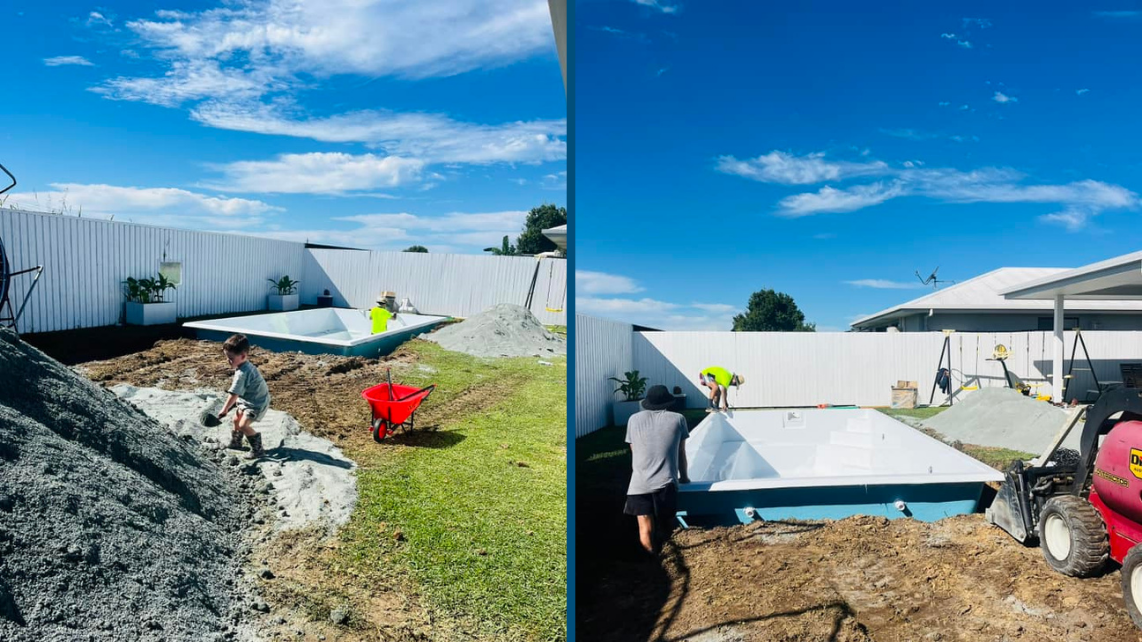
Check that there are no big trees nearby. Big trees mean lots of leaves in your pool. Although it is up to you to decide whether to take it out or not, the roots from some trees can grow towards water and might even damage the pool shell or pipes.
Look up to see if there are power lines or overhanging branches. You can't build a pool under power lines as it is not safe, and you might not get approval from the council.
Look also at where rainwater goes after it pours down. You may not want water to run straight into your pool area. If you spot any low areas where water pools, try to choose a higher spot or talk to your pool builder about drainage.
Make sure there is enough room around the pool. You will need space for a fence as it is mandatory. In Queensland, pool fences must be at least 1.2m high and follow strict rules. Leave enough space for walking, cleaning, and having fun beside the pool.
If you are not sure, talk to a pro. Good pool builders check all these things before starting, so your pool lasts a long time and is easy to look after.
2. Improper Ground Preparation
Getting the ground ready is one of the most important steps for your fibreglass pool. If you skip it or do it wrong, you can end up with a wobbly or cracked pool. The ground needs to be flat and firm, but not too hard.
First, take out all the grass, roots, and rubbish from the spot. The base layer should be clean sand, free from clay and lumps. This is called screeding. The sand should be smoothed out, not packed down super tight like a concrete slab, but not left loose either.
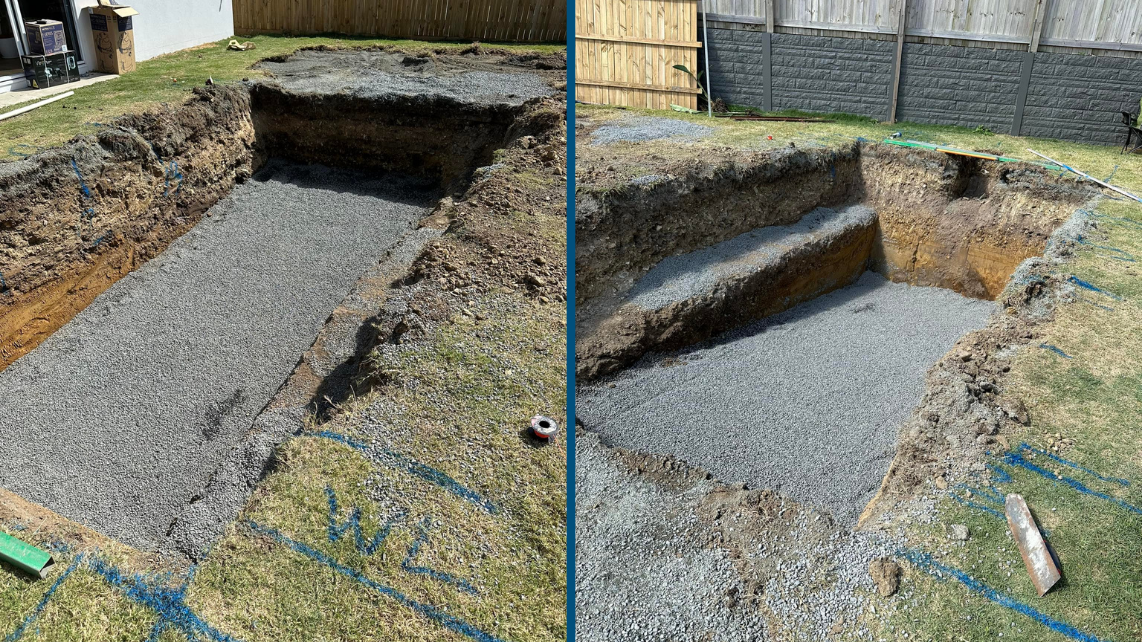
Make sure there is a bedding layer at least 75mm thick under the pool shell. This layer helps the pool settle evenly. If it is too thin in spots, the pool can sink or bend.
And for DIYers: never use dirt, topsoil, or any material with organic stuff in it, as this can rot and make holes appear under the pool.
Check the base is level before the pool goes in. Use a long straight edge or a laser level if you can. If one side is lower, water will sit unevenly, and you might see more stress on the pool surface or get 'hollow spots' that feel or sound wrong when you walk on them.
3. Inadequate Access Planning
Getting your pool into your backyard takes some thinking ahead. It is not just about having space to dig the hole. You also need room for trucks, machines, and the pool shell itself to come in. Most times, the pool arrives in one piece. That means it is big, and it needs a clear path.
Usually, you need at least 900mm of space for a small digger. Sometimes, wider is better. Like us, we require 1600mm instead of 900mm so all our equipment can fit.
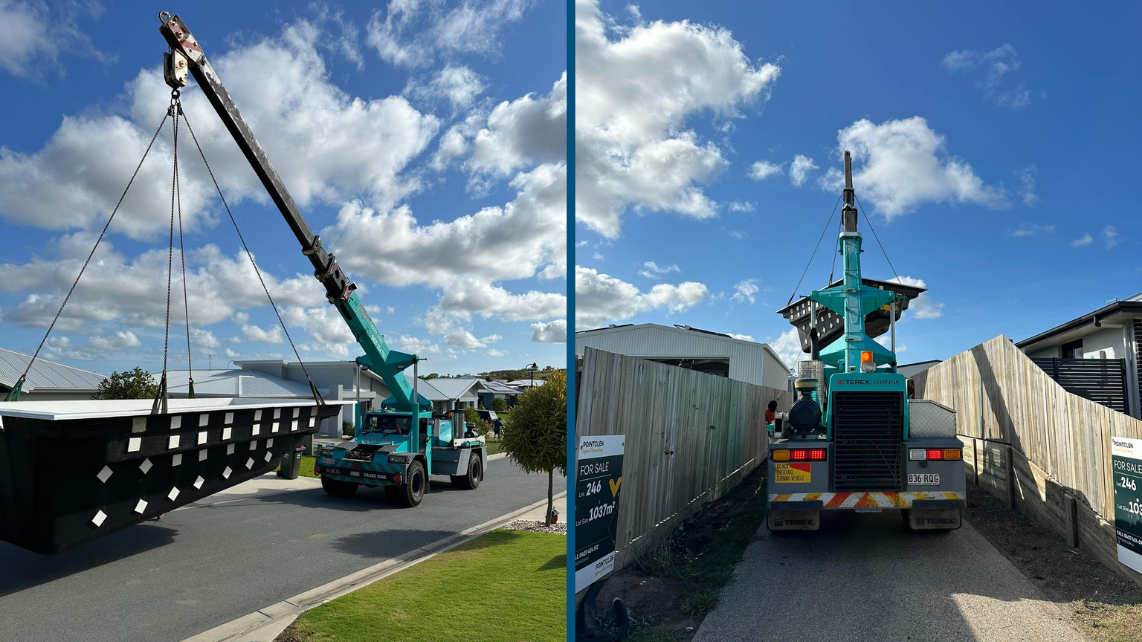
Tight spots can slow things down, or you might need a crane, which can cost more. Make sure there are no big trees, fences, or sheds blocking the way.
Always consider where the spoil (the soil you dig out) will go. You need a space to put it while building. If your backyard is very narrow, talk with your builder first. They can check if trucks or machines can get through.
Also, look at gates, paths, and side access. Sometimes, you might have to remove a fence panel or gate for the day to get everything in. If you have one, your pool installer should always check access before starting, just to keep things easy for you.
4. Ignoring Local Regulations and Permits
Don't skip the paperwork. All pool jobs in Mackay must follow certain laws and rules. You need council approval before digging. And if you don't get a permit, you could face fines or have to take your pool out. It's the law to check where water and sewer pipes are before you dig too.
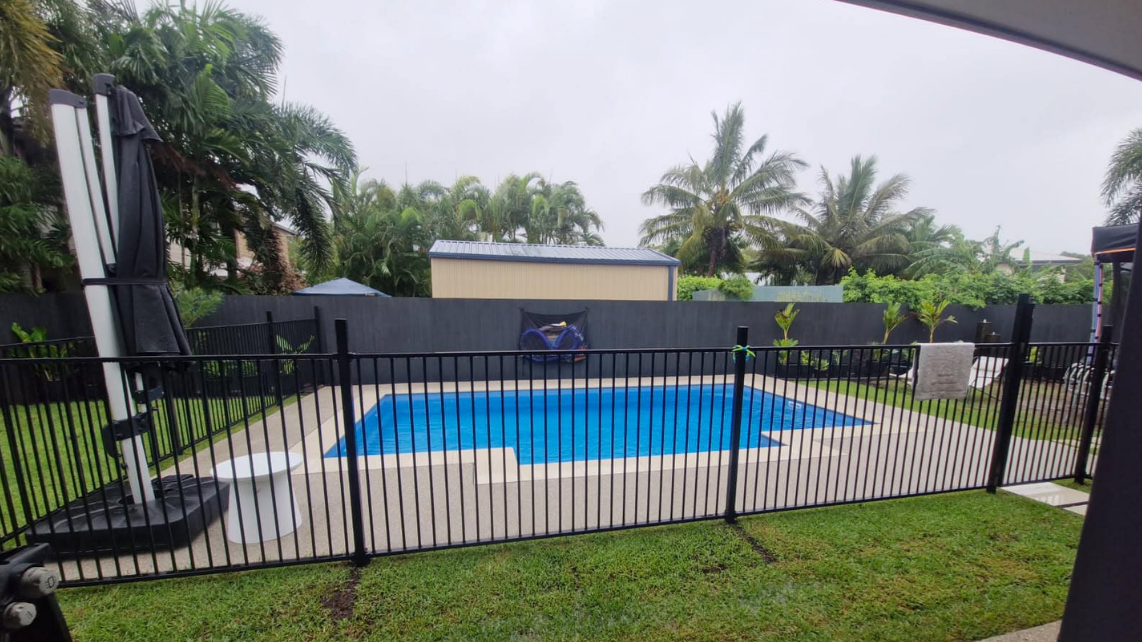
Like what we mentioned, it's the government that decided to have pool fences installed along with your pool, and it must be at least 1.2m high, with no gaps wider than 100mm. You also need a self-closing, self-latching gate. Put up a CPR sign as well where people can see it near the pool.
All electrical work, like pool lights or pumps, must be done by a licensed electrician. The same goes for plumbing. Use pipes and fittings that are made for pools and follow Australian Standards. This way, you stay safe and don't have leaks or broken pipes later. It's very hard to fix subsoil pipes.
If you are not sure what rules you need to follow, ask a licensed pool builder or contact Mackay Regional Council.
5. Overlooking Soil Conditions
Soil matters a lot when you put in a pool. Not all dirt is the same. Some soils are strong and dry, but some soils can move or change a lot when they get wet or dry out.
A soil-related problem in Mackay is something called reactive clay. This is a type of clay soil that swells up when it gets wet and shrinks when it dries out. Think of it like a sponge, soaking up water then drying out and shrinking again.
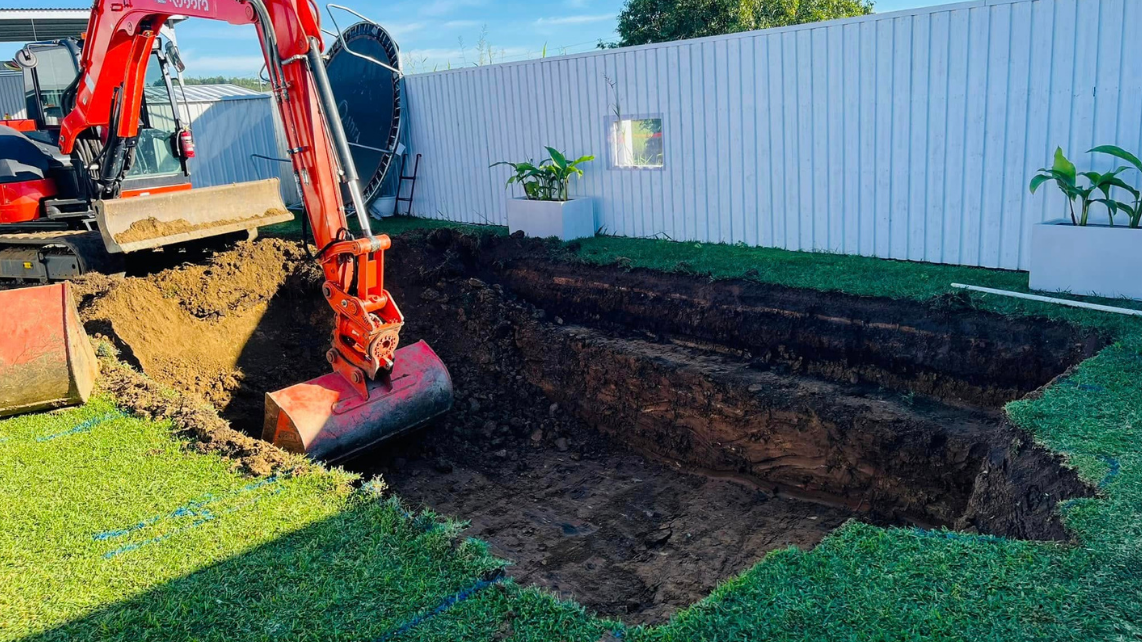
If your backyard has reactive clay, talk to your pool installer about what to do. Normally, you need extra drainage under and around the pool. You might need a special pipe (called a slotted drainage pipe) or a hydrostatic relief valve, which helps let water escape and stops pressure from building up.
Sometimes, the bottom of the hole is lined with a layer of clean sand, at least 75mm thick, so the pool settles safely.
Don't use clay, soft dirt, or anything with lots of bits of plants as the base. Use clean sand or fine gravel, as the Australian Standards say. This stops movement. Soft or lumpy soil can make your pool uneven or form holes underneath.
If you are not sure what soil you've got, ask your builder or get a soil test. If we were to install your fibreglass pool, we would really recommend this, although it is not a requirement. We just want to make sure we design the right base and engineering for your exact conditions to prevent problems down the track.
6. Incorrect Backfilling Techniques
Getting backfilling right is needed for a strong, safe fibreglass pool. Backfilling is filling the space around the outside of the pool shell after it's placed in the hole. If you do this step wrong, your pool can move, get damaged, or even crack.
You must use clean, free-draining material for backfill. The Australian Standards say it should be either fine crushed rock (with stones no bigger than 7mm) or washed sand. Do not use clay, soil with old roots, or any rubbish. Bad backfill can trap water and make it hard for it to drain away.
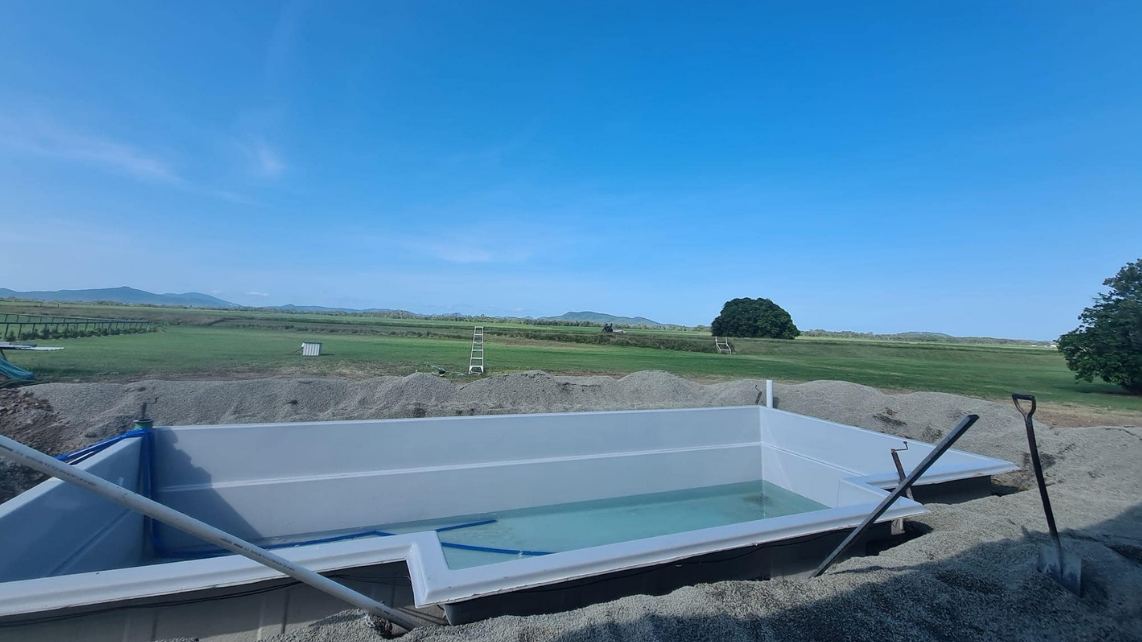
As you backfill, fill the pool with water at the same rate. This keeps the pressure equal on both sides of the shell and stops it from moving or bulging. This keeps the pressure even on all sides. If you fill the pool first or backfill too quickly, the sides could bulge in or out.
Also watch out for hollow sounds around the shell when you tap it. That means there are holes or gaps under the shell. Hollow spots can lead to weak areas where the pool might break later.
7. Neglecting Electrical and Plumbing Requirements
It is necessary to get your pool's plumbing and electrics done right. If not, it can be unsafe or lead to leaks and problems later. Never try to do this work yourself if you are not fully trained.
All pool wiring and water pipes should be installed only by licensed tradespeople. In Australia, this is the law. Electricians must follow the rules in AS/NZS 3000, which is the Wiring Rules standard.
For plumbing, the pipes and fittings should be made for pool use. They must handle strong pool chemicals and high water pressure. The Australian Standards say to use pipes rated at least to 'Class 9', which means they can handle pressure up to 0.9MPa.
Put pipes and wires where they are safe and easy to get to if they ever need fixing. Your pool builder should check that there are no leaks and that everything works before finishing the job.
8. Inadequate Drainage Planning
Water needs to leave your pool area easily. If it cannot drain away, it can cause lots of problems, especially underground. Wet ground close to your pool can push on the shell, making it move or crack. Flooded ground can also make the area muddy and messy, which is no fun.
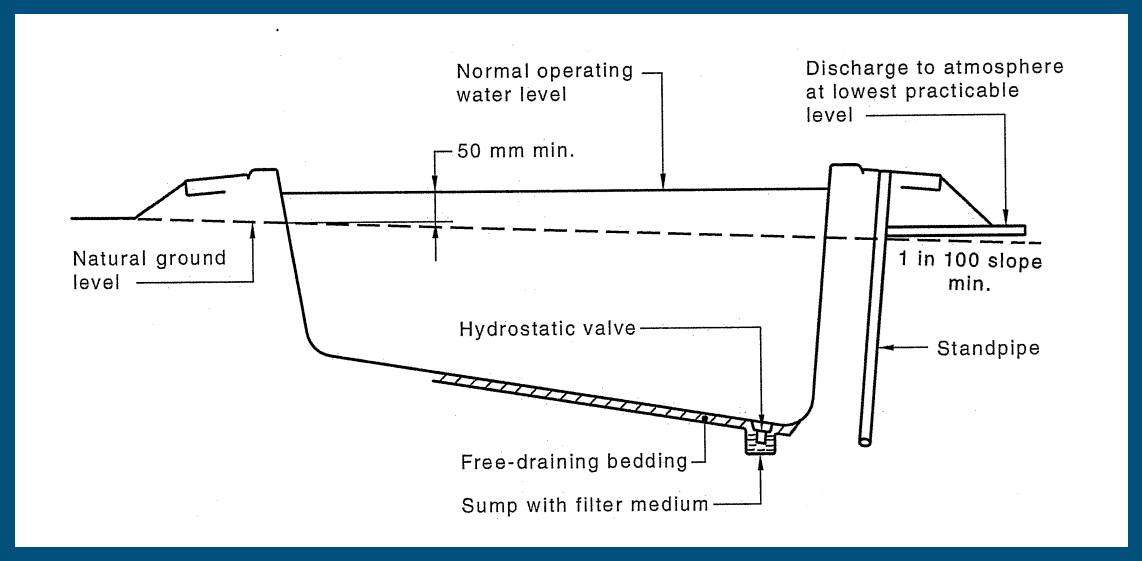 A figure from Page 10 of AS 1839:2021 showing pool drainage, hydrostatic valve, and standpipe.
A figure from Page 10 of AS 1839:2021 showing pool drainage, hydrostatic valve, and standpipe.
The Australian Standards say you must keep water from soaking into the ground around and under your pool. If your soil does not drain well, you might need to put in slotted drainage pipes or a sump pit under or beside the pool. These pipes let water escape if it builds up after heavy rain or if the water table is high.
Make sure the ground slopes away from the pool, not towards it. It will help the rain run off instead of making big puddles. The final layer around the pool should be free-draining gravel or sand. Do not use clay or heavy soil, as these hold water in.
Good drainage protects your pool from moving or 'popping out' of the ground. It also helps keep your yard healthier and easier to look after.
Bonus: Going with the Cheapest Installer or Contractor
Some folks try to save money by going with the wrong and cheap installer, or even roping in a few mates for a DIY fibreglass pool install.
There is nothing wrong with building your pool on your own. Many families like to take on the challenge, and we even offer DIY pool kits for this very reason. These kits come with the same tough materials and clear instructions the pros use.
So if you want to go DIY, make sure you're ready to follow the Australian Standards and local rules. And remember, if you need help or get stuck, you can always reach out for advice.
For professional installation, in Queensland, every pool builder must have a valid QBCC licence. Always ask to see it before you start. A good contractor will know the Australian Standards for fibreglass pool installation. They will use proper materials, prepare the ground well, and make sure the drainage, plumbing, and wiring all meet the rules.
Check the contractor's past work. Ask for photos of other pools they have built in Mackay. Look for reviews or chat with other pool owners if you can. If a builder is honest, they will be happy to answer questions and explain how they do things.
Final Thoughts
A great fibreglass pool is not all about good looks. It is about getting the important steps right: planning, preparation, and safe building. If you follow the proper process and avoid common mistakes, you will enjoy years of fun and peace of mind in your Mackay home.
There's one last tip we want to give, especially for DIYers: don't rush the process. Take time with every stage, ask questions, and always double-check the details. It's better to get it right the first time than to fix problems later.
If you ever need help with your fibreglass pool project, just reach out to us. We are licensed installers with years of experience installing fibreglass pools in Mackay, and we're happy to chat or give you a quote.
And if you're still thinking about which fibreglass pool to choose, check out the fibreglass pool designs our partner offers. There's always something for every backyard and budget.
